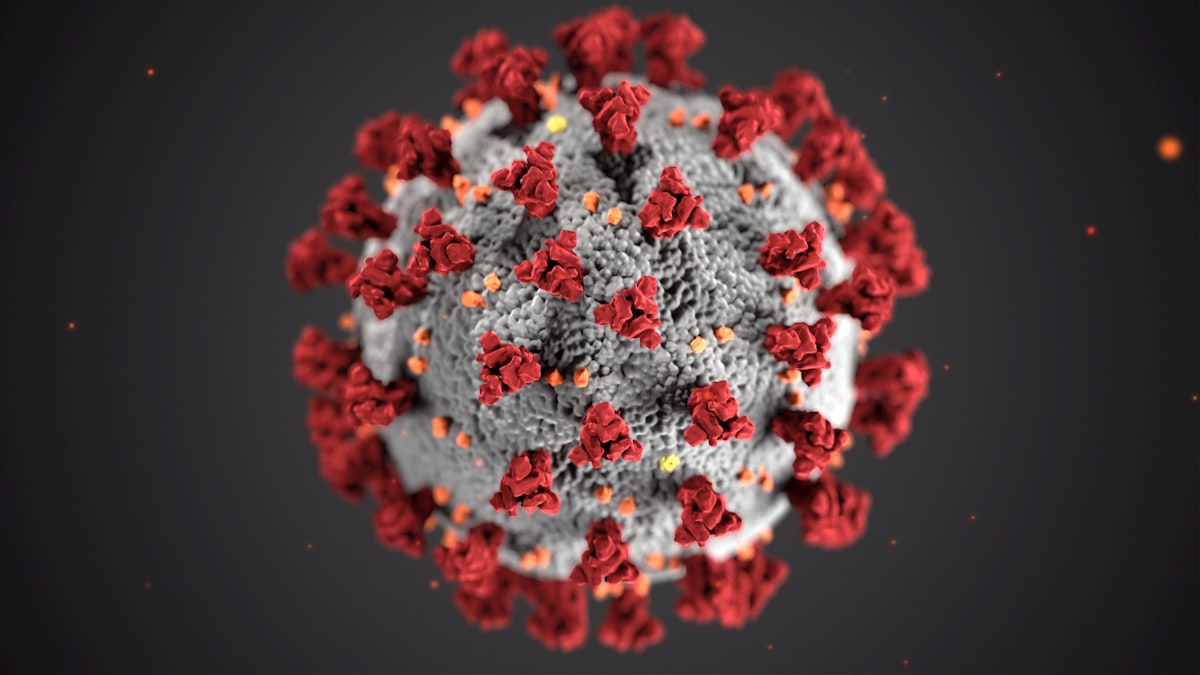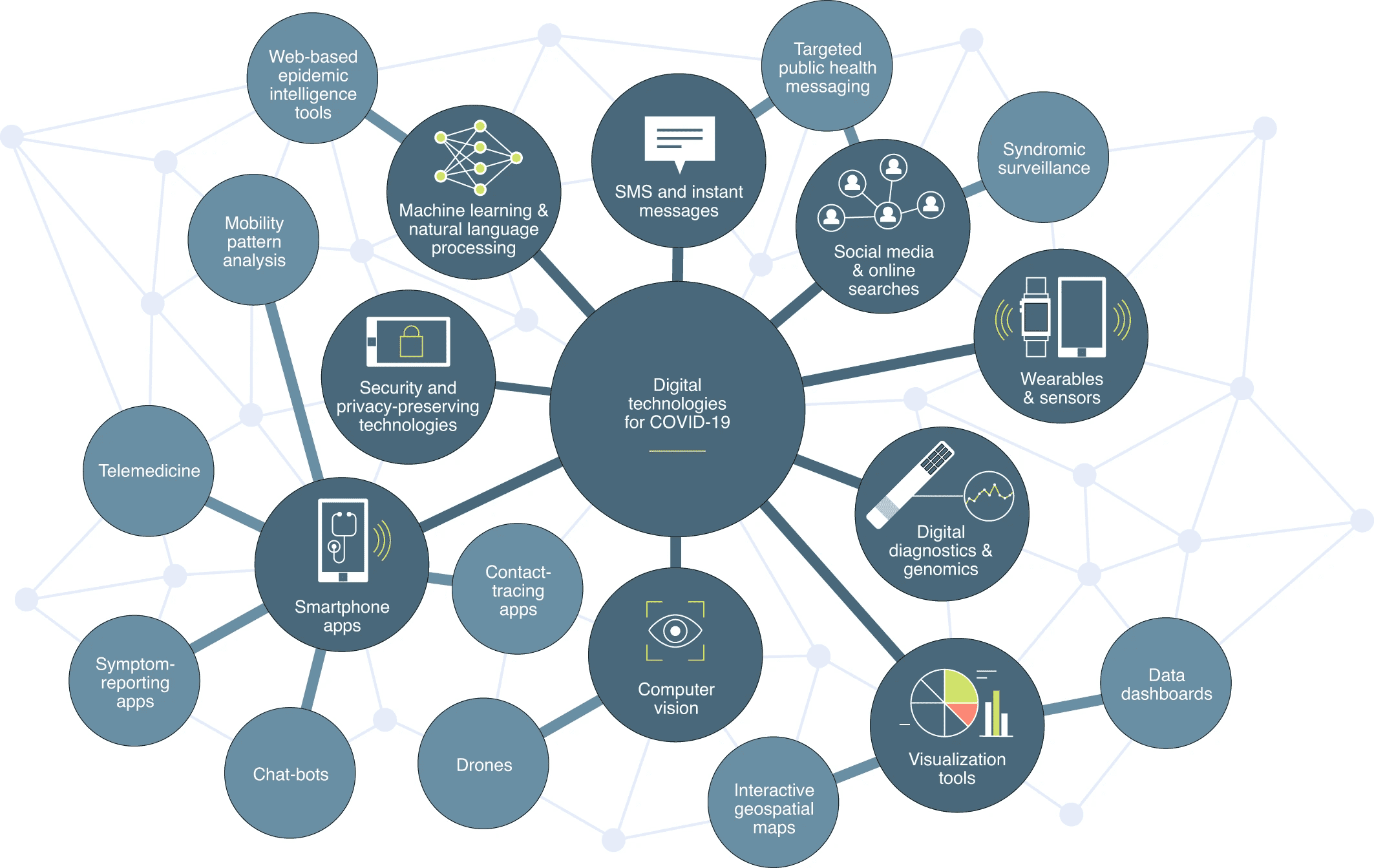How Tech Stood Up Against COVID-19?
It’s about one year since the SARS-CoV-2 was first identified. And I know we’ve been reading and hearing about it from all perspectives. Even on several occasions in my newsletters. There’s been a lot of hype in those issues. Now it’s time to sober up a bit!

Tech became such an important factor in the pandemic response that the biggest and most notorious journals, such as Nature Medicine and the Lancet, were also writing about it.
Nature Medicine published a review of digital technologies in the public-health response to COVID-19. Along with it was this picture, which gives an overview of the areas of digital health.

I found one of the most interesting problems to be “data sharing and data quality”. Since data is the basis for any kind of automated systems and machine learning models we want to implement, its format is of utmost importance. Firstly, there’s the problem of making the data open for researchers. That’s also one of the problems “COVID-19 sledilnik” (a Slovenian open-source data dashboard) has. Secondly, we can’t do anything with open data if it’s not readable by computers.
Researchers are calling for technology and telecom companies to share their data in a ‘proportionate, ethical and privacy-preserving manner, often citing a moral imperative for these companies to contribute where there is justification for data use. Some companies are making subsets of aggregated data available. - Digital technologies in public-health response to COVID-19
I recommend you read more in this review with wide-ranging and clear explanations.
Artificial intelligence
A lot of attention was also given to artificial intelligence (AI). There have been a high number of positive applications of AI during the pandemic (go to this link to see past issues about AI). BlueDot, a company actually issued warnings about an outbreak, before anyone else. Their algorithm crawls through different news sources and aggregates data, which were later analysed by epidemiologists (see, we still need humans 😉). Some other systems even correctly predicted that the virus would spread to Tokyo. You can read more about it in this article.
Perhaps the greatest asset of the AI was and still is that it can ease the workload of healthcare workers in triage and in care. This is especially important to not overburden healthcare systems. Examples of this are Providence by Microsoft and Care.ai. To learn more about automation in healthcare read issue #21.
But not everything is so great about it. AI was still too late. It couldn’t predict the pandemic, it just helped us manage it in some ways. One of the reasons for this is the lack of data. The last pandemic of such extents was about 100 years ago. And it’s really hard to track it. In 2013, Google launched Flu Tracker to help the CDC track influenza outbreaks in real-time. Then it missed once by 140%, and it was shut down.
As we mentioned in the introduction, all of these examples are not solutions but rather directions for future use. It’s not all praise for A.I. There are reasons to be sceptical about its help against the pandemic in the same way there are reasons to be optimistic about it. - The Medical Futurist
Consumer solutions
There was little doubt that consumer solutions will be available sooner or later. In the world of testing, we have about two reliable options, PCR and antigen tests. Then there is another type of test being developed, but it’s in very early stages. It’s based on graphene and is said to detect SARS-CoV-2 in 10 minutes and would be available for at-home use. Might be a little late to the party, but still useful for future testing and inevitable outbreaks. However, it’s already taking longer than the vaccine. Read this article for more.
An interesting thing happened to one of the Whoop members (I’m a fan, see this issue) and his story was shared on LinkedIn by the founder and CEO. The member was tested negative multiple times, but then experienced an RR spike and had only a 1% recovery rate according to the Whoop strap. The following test was positive. Pretty mind-blowing, although very coincidental.

Helping us get back on track
Finally, this is the opportunity for digital health to shine even brighter. We need to get back on track as soon as possible to alleviate the economic, social and health crisis.
One of the most interesting is the implementation of “health passes” for travelling abroad. JetBlue, Lufthansa, Swiss International Airlines, United Airlines, and Virgin Atlantic are all rolling out the CommonPass mobile app. This will serve as a certificate for negative COVID-19 tests and proof of vaccination (see how Estonians attempt to solve this problem). This will improve the “user experience” of travellers, who now won’t have to carry around papers with negative results. Additionally, it will be more reliable and less prone to fraud. In fairness, as you know, some countries already need us to vaccinate against cretain diseases. So this might not be such a big issue after all.
All of this isn’t meant to give a negative connotation to digital health in the pandemic. But I tried to be a little less hyped than I usually am.




